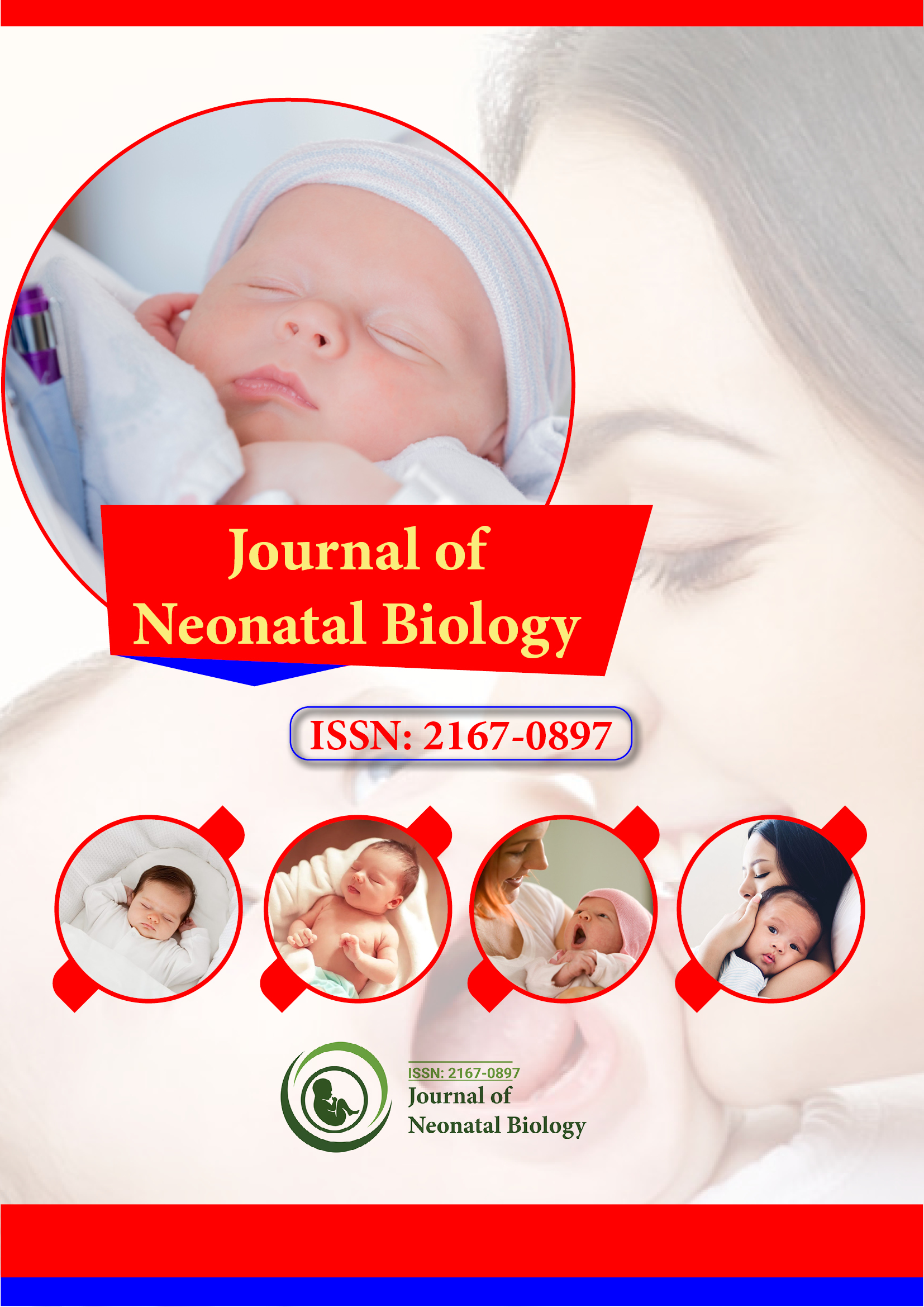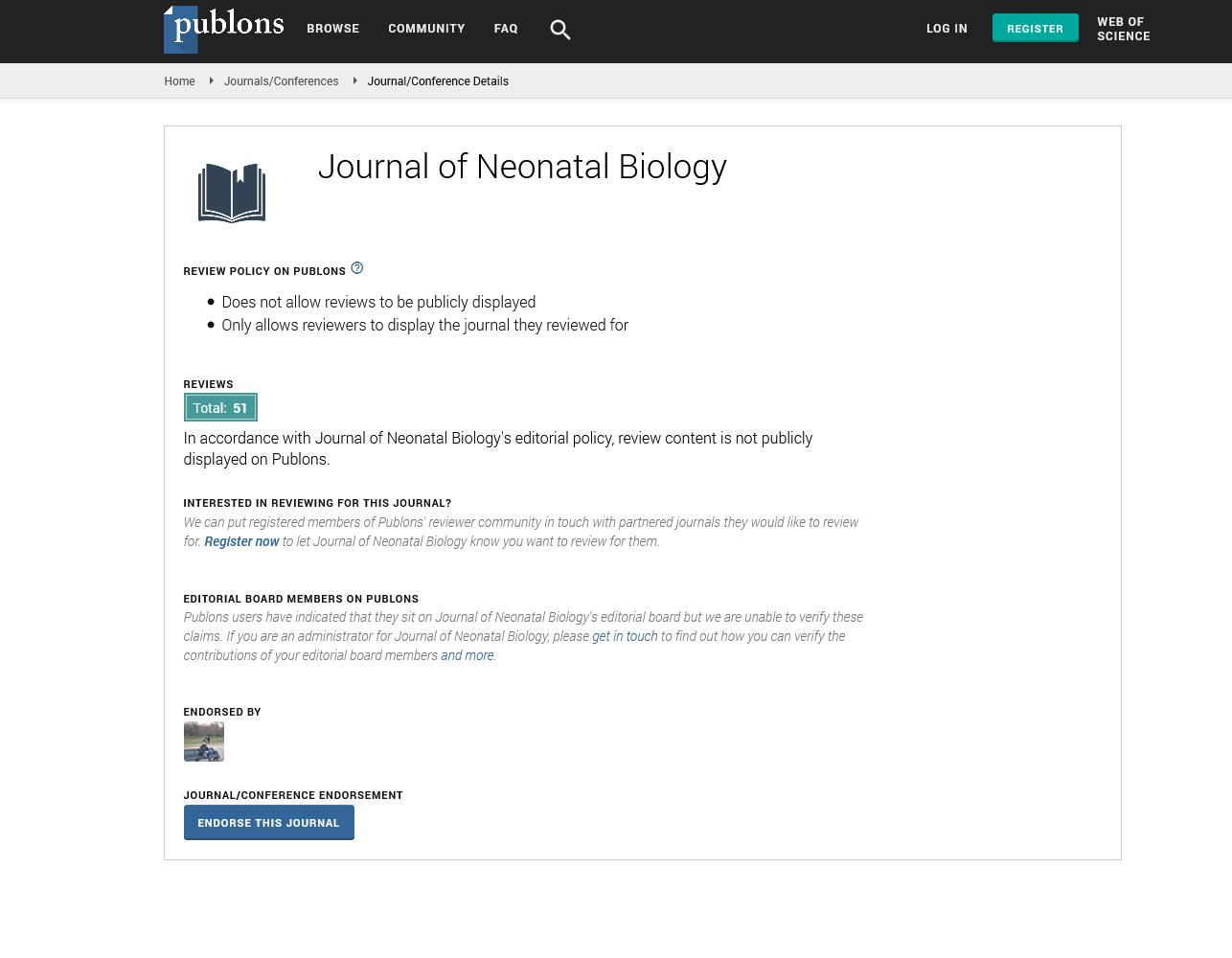PMC/PubMed Indexed Articles
Indexed In
- Genamics JournalSeek
- RefSeek
- Hamdard University
- EBSCO A-Z
- OCLC- WorldCat
- Publons
- Geneva Foundation for Medical Education and Research
- Euro Pub
- Google Scholar
Useful Links
Share This Page
Journal Flyer

Open Access Journals
- Agri and Aquaculture
- Biochemistry
- Bioinformatics & Systems Biology
- Business & Management
- Chemistry
- Clinical Sciences
- Engineering
- Food & Nutrition
- General Science
- Genetics & Molecular Biology
- Immunology & Microbiology
- Medical Sciences
- Neuroscience & Psychology
- Nursing & Health Care
- Pharmaceutical Sciences
Perspective - (2021) Volume 0, Issue 0
Perspective on Neonatal Toxic Shock Syndrome-Like Exanthematous Disease
Janusz Gadzinowski*Received: 20-Jun-2021 Published: 01-Jul-2021
Perspective
A Term Infant of Neonatal Toxic Shock Syndrome-Like Exanthematous Disease Complicated with Hemophagocytic Syndrome. Neonatal toxic shock syndrome-like exanthematous disease (NTED) is a newly recognized neonatal infectious disease, caused by the superantigen toxic shock syndrome toxin-1 (TSST-1). TSST-1 is mainly produced by methicillin-resistant Staphylococcus aureus, and the immune responses to TSST-1 are known to cause toxic shock syndrome, a life-threatening infectious disease. The clinical symptoms of NTED are skin rash, fever, and thrombocytopenia, but severe thrombocytopenia is rare in term infants with NTED. Although the cause of NTED is the same as that of toxic shock syndrome, the clinical symptoms of NTED are milder than toxic shock syndrome. The mild phenotype of NTED has been explained by selectively elevated serum levels of anti-inflammatory cytokine interleukin (IL)-10, which suppress immune responses to TSST-1. In the present study, we report a term female infant of NTED complicated with hemophagocytic syndrome (HPS). HPS is characterized by systemic inflammation and hemophagocytosis, caused by uncontrolled activation of T cells and macrophages. The serum IL-10 level of the patient at 4 days of age was relatively low (67 pg/mL) for NTED but still higher than normal controls (< 2.0 pg/mL). The patient also showed severe thrombocytopenia. We speculate that the serum IL-10 level of the patient was enough to supress immune responses to TSST-1, thereby resulting in NTED, but not enough to suppress the onset of HPS. This is the first reported case of NTED complicated with HPS. If a physician encounters an NTED patient with severe cytopenia, microscopic examination of peripheral blood smear should be carried out to exclude HPS. Molecular epidemiology of methicillin-resistant Staphylococcus aureus strains causing neonatal toxic shock syndrome-like exanthematous disease in neonatal and perinatal wards. Neonatal toxic shock syndrome-like exanthematous disease (NTED) is a new neonatal disease caused by toxic shock syndrome toxin 1 (TSST-1). We conducted a prospective surveillance study and characterized the methicillin-resistant Staphylococcus aureus (MRSA) strains isolated from patients with NTED and compared them with the strains from patients with other MRSA infections and asymptomatic carriers. The study was performed in the neonatal intensive care unit and a general neonatal and maternal ward in the Tokyo Women's Medical University Hospital (TWMUH) from September to December 1998. Among 103 patients eligible for the study, MRSA was detected in 62 (60.2%) newborns; of these 62 newborns, 8 (12.9%) developed NTED, 1 (1.6%) had another MRSA infection, and 53 (85.5%) were asymptomatic MRSA carriers. Sixty-nine MRSA strains were obtained from the 62 newborns. DNA fingerprinting by pulsed-field gel electrophoresis showed two clusters: clone A with 8 subtypes and clone B. Sixty-seven of the 69 MRSA strains (97.1%) belonged to clone A, and type A1 was the most predominant (42 of 69 strains; 60.9%) in every neonatal and perinatal ward. All but one of the clone A strains had the TSST-1 and Staphylococcal enterotoxin C genes. We also analyzed eight MRSA strains from eight NTED patients in five hospitals in Japan other than TWMUH. All the MRSA strains from NTED patients also belonged to clone A. These results suggest that a single clone that predominated in the neonatal wards of six hospitals might have caused NTED. However, the occurrence of NTED might not be dependent on the presence of an NTED-specific strain.
Citation: Gadzinowski J (2021) Perspective on Neonatal Toxic Shock Syndrome-Like Exanthematous Disease. J Neonatal Biol. 10: 298.
Copyright: © 2021 Gadzinowski J. This is an open-access article distributed under the terms of the Creative Commons Attribution License, which permits unrestricted use, distribution, and reproduction in any medium, provided the original author and source are credited.

